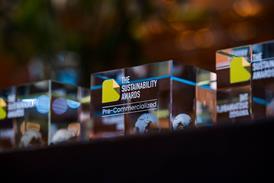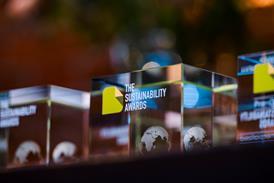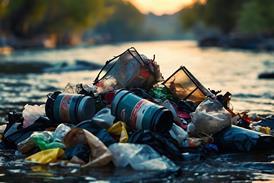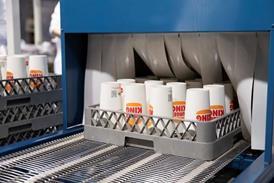
Lots of marketers obsess over massive activations and campaigns, but the biggest impact most brands can have on consumers happens on a few square centimetres of cardboard or plastic. In this article, Born Ugly’s CSO Wander Bruijel argues that packaging is the true frontline in the fight for consumer attention.
Despite being the brand’s smallest canvas, packaging carries a heavy weight in a marketer’s toolkit. It’s the most concentrated and enduring expression of a brand. And yet, marketers are often judged more on brand activation than whether the pack triggers the right associations or response from consumers.
Compared to budgets for marketing activation, the creative budget for packaging is often a fraction of the total marketing budget.
Unlike marketing activation, money spent on packaging is seen as a product cost – something to reduce rather than invest in. And, once those costs are committed, packaging is (rightly) locked for years.
But, when every dollar spent on ephemeral activation is ultimately intended to prime a split-second decision at point of purchase, it’s critical that brands see packaging as their brand’s starting point rather than the end, and as part of their marketing mix rather than a product cost.
They should see it as the critical point in the consumer journey where the fight for physical and mental availability culminates to deliver a desired response… a purchase. Packaging is the ultimate stress test of a brand’s distinctive assets. It’s the brand in the hand.
Build availability with your consumer
Marketers often treat packaging as separate from the brand, handing off packaging briefs long before positioning is settled. Worse still, the two briefs often land at different times with entirely different agencies.
Ultimately, packaging must capture the brand’s essence and the product’s promise whilst standing out on a crowded shelf. More importantly, it must deliver a non-conscious response from a consumer shopping on autopilot. It’s the point where the battle for physical and mental availability must be won.
This battle is won through clear positioning, differentiation and ultimately clarity on the distinctive brand assets needed to anchor the brand in the consumer’s mind.
It’s a dynamic that the strongest brands have long understood. Heineken has its red star and green bottle, Coca-Cola its iconic font and red colour block. Red Bull its distinctive blue/silver quadrant canvas.
The reason distinctive brand assets have such power is rooted in how our brains work when we shop. Consumers rarely make considered choices on a slow, analytical track. Instead, they operate on autopilot, relying on fast, intuitive shortcuts to decide what to buy in seconds.
Distinctive brand assets serve as mental shortcuts - these instantly recognisable cues trigger stored associations and preferences without conscious effort. Colour, shape, logo, typography and even texture combine to help cut through the noise.
This mental availability is what brands fight for. It means being the first brand that “pops” into the shopper’s mind. The more consistently and confidently you own these assets on pack, the stronger their memory imprint - and the easier the choice for your consumer.
Fixing your distinctive brand assets is the start. Communications - advertising, social media, out-of-home - activates and embeds those assets in consumers’ minds over time, so that when shoppers are at the shelf, recognition is immediate.
Without this consistent anchor, marketing activation risks becoming disconnected noise, and packaging risks being overlooked due to clutter. Together, they create a powerful ecosystem that makes your brand unmissable. If your brand doesn’t have distinctive assets, it’s simply not there. Consumers don’t study packs. They glance, they grab, they go.
But snap out of autopilot during your next weekly shop and you’ll soon see that it’s a lesson many brands have forgotten.
Stare at the ready-to-drink shelf, chilled vegan section or cleaning aisle, for example, and you’ll get a nosebleed from cognitive overload. One has become the playground for pop artists rather than designers. The other has succumbed to typographers with a penchant for capitalisation. The latter is rife with painters of still life flowers and fruit.
All stuck in the dynamics of mimetic isomorphism - bland clones missing distinctiveness and occupying no mental real estate. Products, not brands.
Which is why it’s baffling that packaging is often the first touchpoint briefed – ahead of the brand – and usually not considered part of the marketing mix.
Too often, packaging is approached as an executional task — a translation exercise that follows the “real” brand work. But if your brand can’t be expressed on pack, you probably do not have a strong brand.
Tropicana learned the hard way. When they stripped the orange-with-a-straw from their cartons and abandoned their curved wordmark, shoppers walked straight past. A breakdown in mental availability.
On the flip side, think of Heinz, whose keystone label has remained largely unchanged for generations. Or Fairy, whose bottle shape and concentrated droplet are instantly recognisable. Brands anchored by doing a few things so consistently, so distinctively, that they become impossible to miss.
Packaging is where your distinctive brand assets get fixed - where you lock them down, commit, and start building memory structures. From there, your broader communications can activate and reinforce those assets.
So next time you refresh your brand, invest in pack before activation. If your brand can’t work on a pack, it won’t work for you. Don’t treat packaging as a cost, but as a brand investment to get hot under the collar about. Let it do a few things really well, rather than do everything badly. It is your brand’s purest and most lasting moment of truth.
If you liked this story, you might also enjoy:
The ultimate guide to the Packaging and Packaging Waste Regulation in 2025
How are the top brands progressing on packaging sustainability?
Everything you need to know about global packaging sustainability regulation in 2025
The key to increasing the use of reusable packaging in supermarkets





















No comments yet